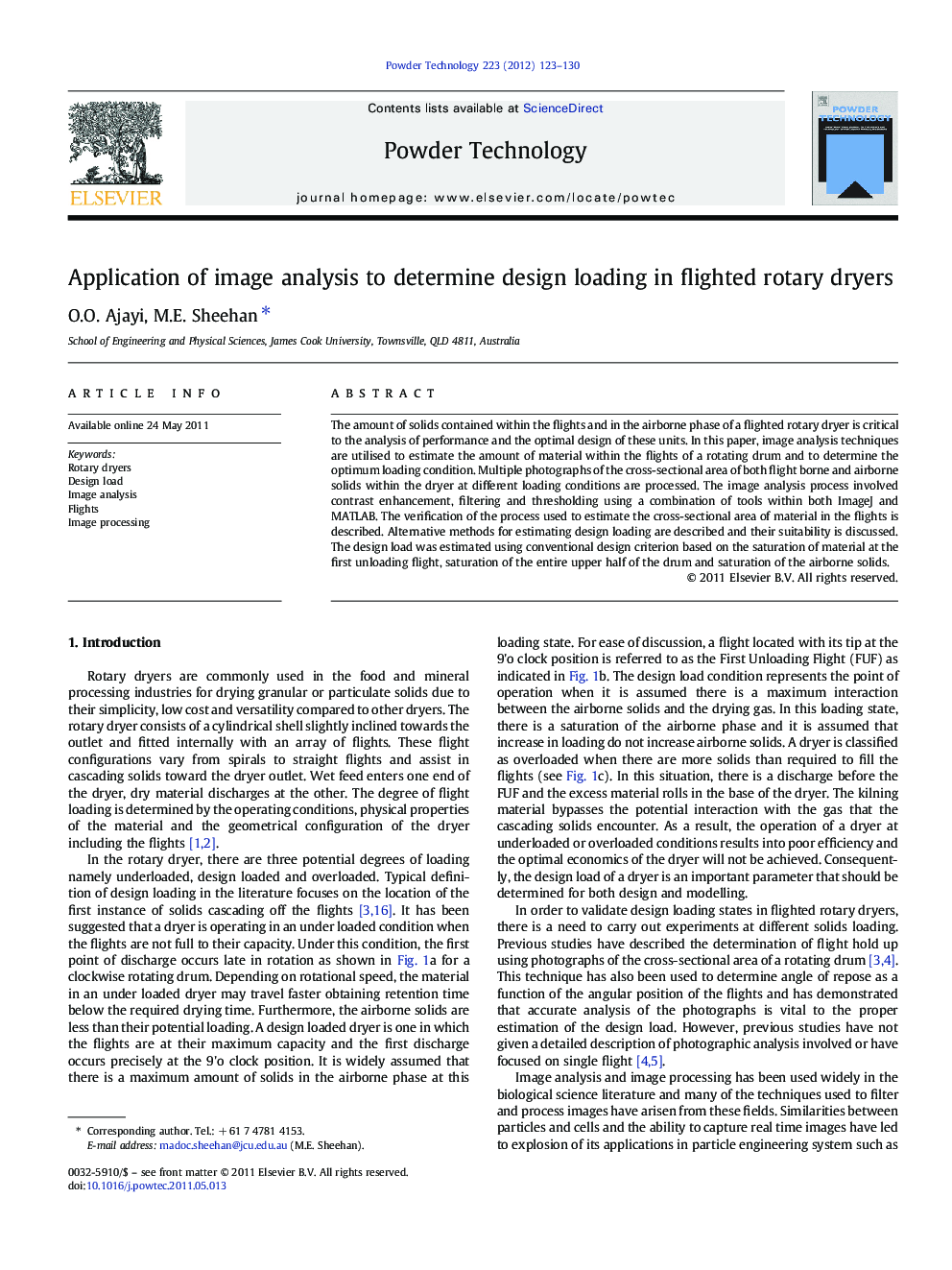| Article ID | Journal | Published Year | Pages | File Type |
|---|---|---|---|---|
| 237282 | Powder Technology | 2012 | 8 Pages |
The amount of solids contained within the flights and in the airborne phase of a flighted rotary dryer is critical to the analysis of performance and the optimal design of these units. In this paper, image analysis techniques are utilised to estimate the amount of material within the flights of a rotating drum and to determine the optimum loading condition. Multiple photographs of the cross-sectional area of both flight borne and airborne solids within the dryer at different loading conditions are processed. The image analysis process involved contrast enhancement, filtering and thresholding using a combination of tools within both ImageJ and MATLAB. The verification of the process used to estimate the cross-sectional area of material in the flights is described. Alternative methods for estimating design loading are described and their suitability is discussed. The design load was estimated using conventional design criterion based on the saturation of material at the first unloading flight, saturation of the entire upper half of the drum and saturation of the airborne solids.
Graphical abstractSolids contained within the flights of a flighted rotary dryer were determined at two rotational speeds. Photographs of the cross sectional areas were collected and processed using contrast enhancement, filtering and thresholding. The verification process is described. Drum design loading was estimated based on the three different criteria.Figure optionsDownload full-size imageDownload as PowerPoint slideResearch highlights► Photographs of flighted rotating drum cross sections were processed using image analysis techniques. ► Different contrast enhancement, filtering and thresholding techniques were applied to upper and lower drum photographs. ► Validation of the image processing techniques was used to evaluate accuracy and image bias. ► Saturation of both the fist unloading flight and total upper half of the drum were used to determine design loading in the drum. ►The effect of two different rotational speeds is presented.
